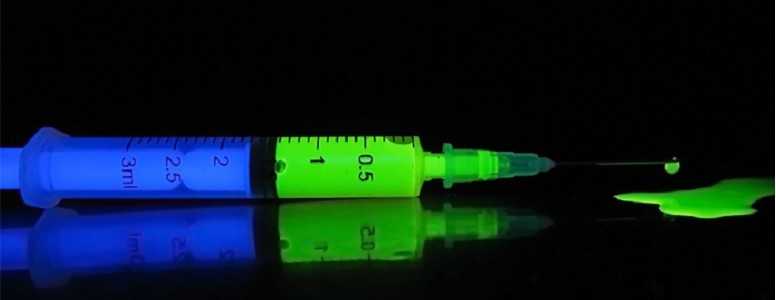Researchers from the University of Pennsylvania have devised a new system for delivering insulin that may eliminate some of the disadvantages associated with insulin pumps.
The new system, activated by ultraviolet light shone onto the skin of people with type 1 diabetes, could be a safer alternative to the cannulas (very small tubes) inserted under the skin, which can, in rarer cases, lead to infection risks and require replacing on a regular basis.
Results of mice trials using this innovative way of controlling blood sugar have been recently released in the journal Molecular Pharmaceutics.
The new method is an injectable insulin-carrying polymer gel made with a special molecule containing a light-sensitive bond that, when exposed to a certain wavelength of light, breaks to release the insulin.
Simon H. Friedma, the study’s lead author, and his colleagues have used a commercially available gel – a polystyrene and polyethylene glycol copolymer – to build their light-activated insulin device.
The researchers only tested it on rodents so far, administering 80μL of the gel under the skin of rats that had a coin-sized light-emitting device attached to the injection site.
The team proceeded to switch on the light for two minutes and then measured the animals’ insulin and blood glucose levels every 15 minutes using a standard glucometer.
They detected an insulin release five minutes after the initial light exposure, which peaked 20 minutes later, and then plateaued.
Blood glucose levels seemed stabilised as there was enough of an insulin release to cause a significant decrease in blood sugar. But, the researchers did say they had to reactivate the gel 65 minutes later to release a second dose of insulin.
Another concern is that the ultraviolet light used to trigger the device may prove damaging to human tissues over time, so researchers would probably have to adapt this technique to use visible light instead.
They also plan to make the material biodegradable as there are potential serious environmental implications of disposing of products using synthetic polymers.
Overall, the gel is promising as it gives patients more flexibility for drug delivery options, but it doesn’t get around the problem of needing to do injections.
The development of what is called “glucose responsive” insulins is, however, on the horizo, with the first JDRF-funded human trials currently underway. This next-generation insulin would work automatically in response to blood glucose, and could, researchers hopen, avoid the threat of dangerous hypos.
What's new on the forum? ⭐️
Get our free newsletters
Stay up to date with the latest news, research and breakthroughs.






